Tuvalu 2011 (5)
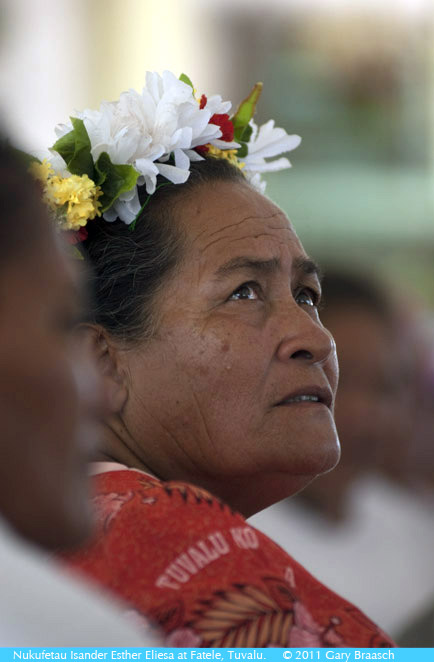
Esther Eliesa listens to an elder speaking at an island celebration, or fatele, put on by 500 individuals from the outer island of Nukufetau, who now live on Funafuti. The celebration honored the building of the first school built in Tuvalu after WWII, 64 years ago in Nukufetau.
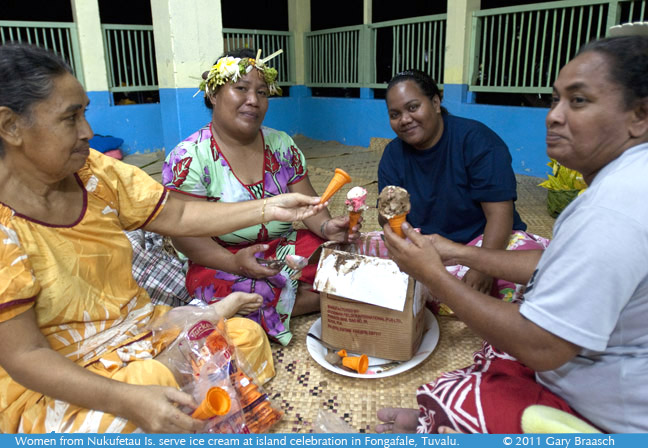
Women from Nukufetau Island of Tuvalu offering up ice cream during the preparations for an island celebration, or fatele, put on by the 500 Nukufetau islanders who now live on Funafuti. The celebration honors the building of the first school built in Tuvalu after WWII, 64 years ago in Nukufetau.
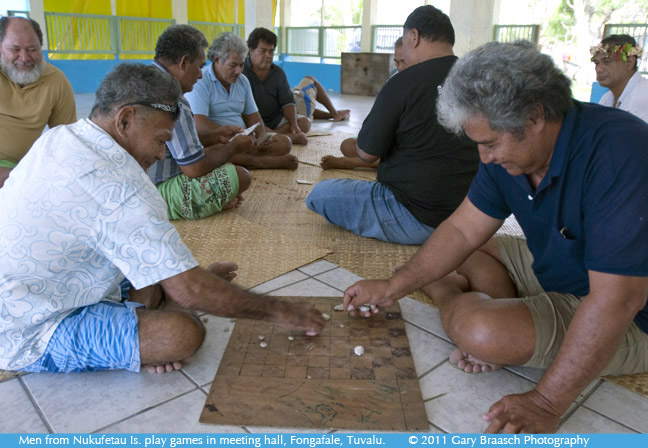
Leaders and chiefs from the Tuvaluan atoll of Nukufetau gather in a maneaba -- meeting hall -- to talk and play a form of checkers and a card game called "sweep." About 500 Nukufetau islanders live now on Funafuti, many are very active in the nation's political and social life.
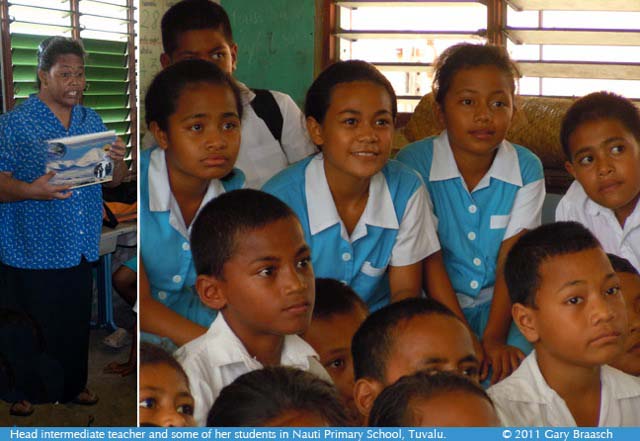
Patisepa, the head of the Department for Intermediate grades at the Nauti Primary School in Fongafale, Funafuti, shows a class of 95 6th graders one of Gary Braasch's books about climate change. Gary presented a slide show on global warming to the class and gave a copy of the middle school book for the school library. There was a lively discussion with questions and answers about climate change around the world and in their community.
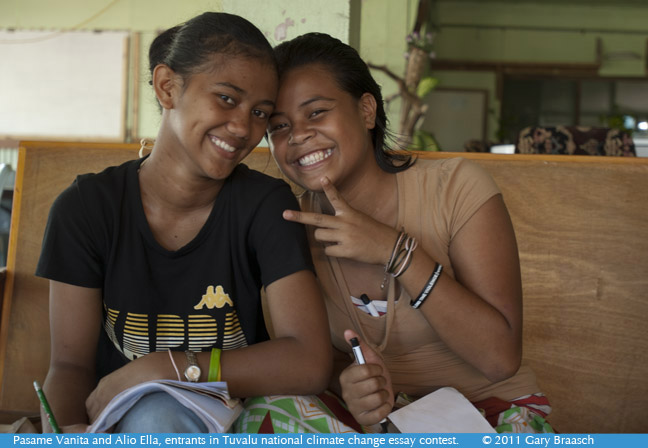
Pasame Vanita, 16 and Alio Ella, 15, having fun while writing essays about climage change in a national climate change/King tide art and writing competion. Part of Tuvalu's public outreach and education on climate change, the contest engaged schools on every island to assign kids to draw or write their impressions and observations of the King (high spring) tides. One of the questions for the essays was: "If you were going to be the Prime Minister of Tuvalu, what would be your plan to deal with sea level rise?" Students' responses included limiting Tuvalu's contribution to greenhouse gases, living in less vulnerable areas that don't flood, and -- said with a grin at us -- perhaps moving to the U.S.
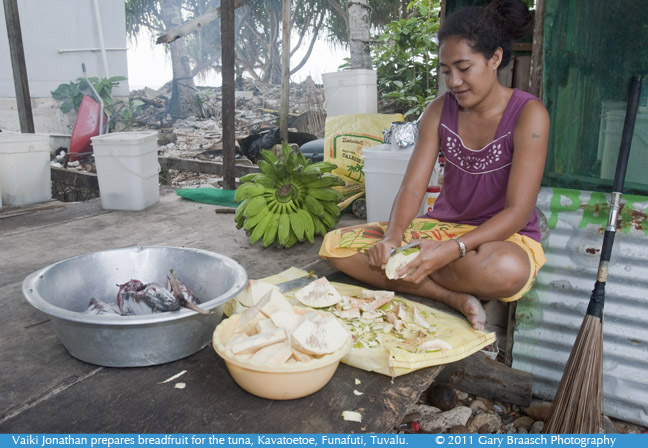
Vaiki Jonathan, 19, preparing to cook tuna with breadfruit in coconut milk. She lives with her aunt in the Kavatoetoe neighborhood because her parents emmigrated to New Zealand in 2006 so her sister could attend school there. Vaiki graduated from high school and now studies science at University of South Pacific in Tuvalu. Just beyond her kitchen is the coral ridge of about 5 meters in height along the Pacific Ocean; the houses here, however, are below that at about 3-4 meters, and subject to flooding during King tides and storms.
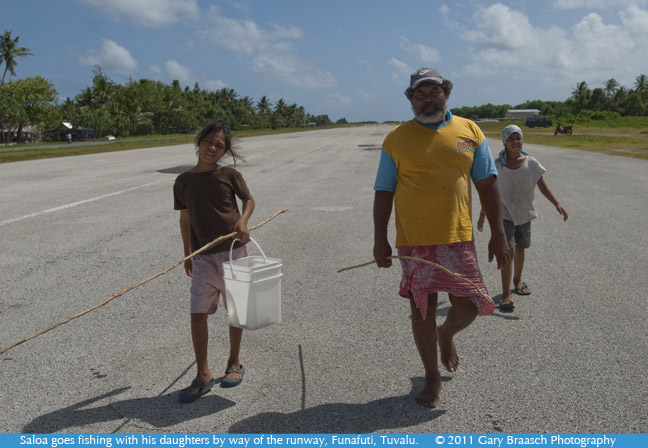
Saloa and his daughters Kumitia and Pelesina stroll down the center of the runway on Funafuti atoll, Tuvalu, on the way to a fishing spot along the ocean. Domestic fishing in the ocean and the lagoon is on a subsistence level for immediate eating by families and friends, especially on the outer islands. Some statistics suggest that Tuvaluans each devour about a kilogram of fish a day -- 2.2 pounds -- but it is more likely somewhat less although a significant and healthy percentage of their daily diet. Some of the fish is eaten raw: "People take a skipjack and go straight to the knife... they eat everything," said Fisheries Department head Sam Finikaso. The fish are not sampled or tested even though people reportedly get sick from raw fish, and there are no long-term studies of toxicity from near-shore pollution.
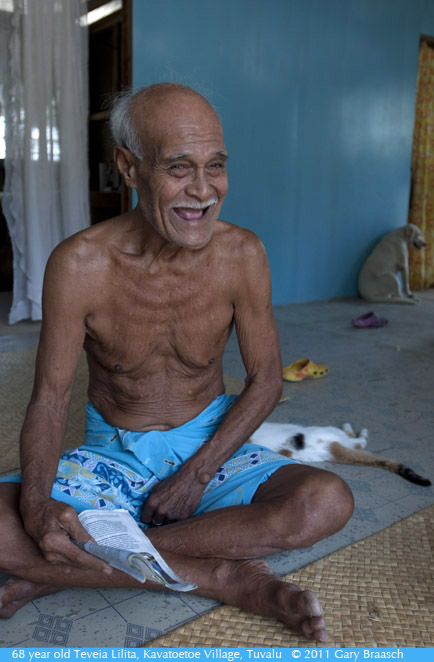
Retired engineer and development coordinator Teveia Lilita, 68, at his family's home in Kavatoetoe. He was a school teacher in Nauru and worked for the Save the Children Foundation for 8 years on his home island of Niutau, Tuvalu. Cement water tanks he helped build there in 1981 are now dirty, leaky and polluted, so he seeks funds and government support to retrofit the 221 tanks. Clean water catchments will benefit 300 to 400 people at a cost of $57,000, considerably less than the cost of replacement with modern plastic 5000 liter water tanks. And the savings in health care is obvious.
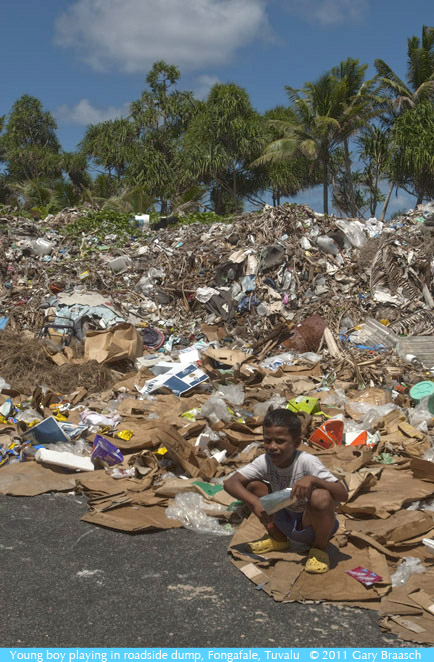
Young boy plays with shards of a Coke can on the edge of a huge dump along the main road going north up the island of Fongafale, Tuvalu. The nation has a massive trash problem, stemming from the rapid influx of population in the past few decades, the large amount of throw-away packaging which comes with food and goods, and the cost of removing trash from the remote location. Many people dump illegally and many more live surrounded by trash, garbage and pig offal. Trash pickup is conducted by the Island Council and the Tuvalu Waste Mangement Department collects waste from community bins in public areas and compostable materials. A Tuvaluan Red Cross leader, Tataua Pese, and a Waste Management officer, Susan Tupulaga, have conducted community clean ups, and some organic waste is now composted for gardens and agricultural use. Officials have begun to store hazardous waste such as old batteries separately, and small recycling programs are being run with the help of Australian and New Zealand companies. A larger 5-million-euro program will begin in 2011, funded by the EU..
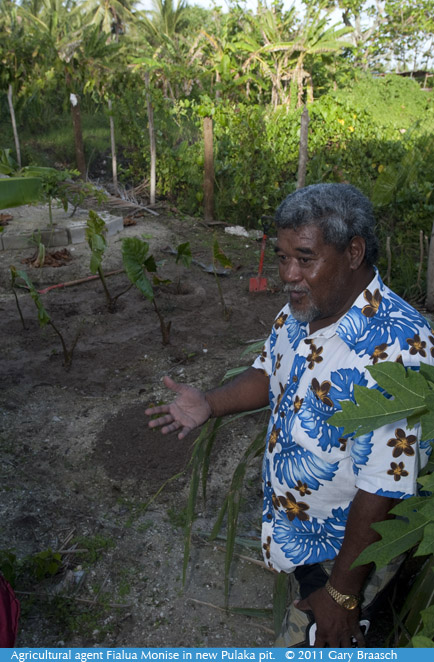
Agricultural extension agent Fialua Monise talks about a newly established pulaka field in the center of Fongafale, Tuvalu. Pulaka is a very large kind of taro, and has been a stable crop in Tuvalu for many years. The root plant is grown in pits which have increasingly been subject to salt and brackish water flooding as sea level rise has increased the influence of King tides. At the same time, say Monise and other Tuvaluan agricultural experts, there are fewer pulaka fields due to development going back to the building of the WWII runway which covered over traditional pulaka pits. More and more people are eating imported food, and this diet change is leading to obesity and other health problems, and to a loss of farming skills. Programs lead by Monise with funding from the Global Environment Fund and other nations aim to teach pulaka and banana cultivation, including the use of terraced pits and fertilization with compost.
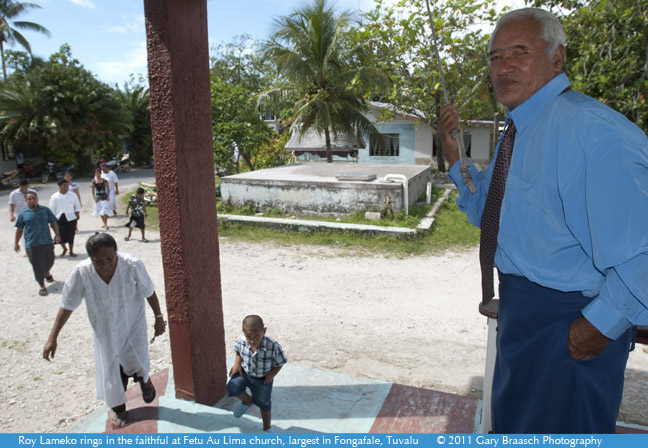
Bell ringer and greeter Roy Lameko calls the faithful to worship each Sunday at the Fetu Au Lima church, largest in Funafuti. This is one of five Protestant congregations of the Christian Ekalesia Kelisiano Tuvalu (EKT) church, established in 1861. Ninety-seven percent of the people are members, and due to this the church has a strong influence in society.
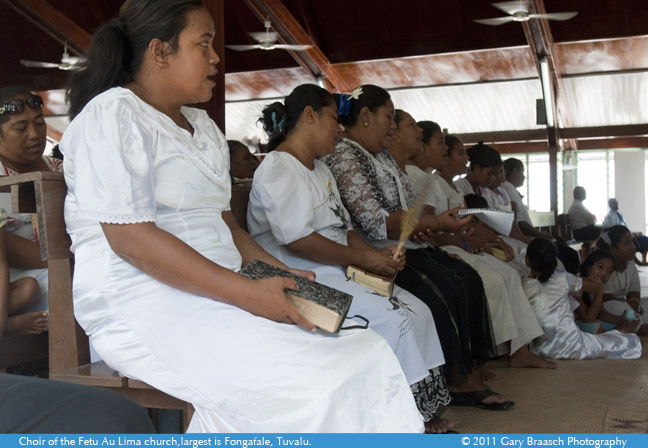
Esther Eliesa listens to an elder speaking at an island celebration, or fatele, put on by 500 individuals from the outer island of Nukufetau, who now live on Funafuti. The celebration honored the building of the first school built in Tuvalu after WWII, 64 years ago in Nukufetau.
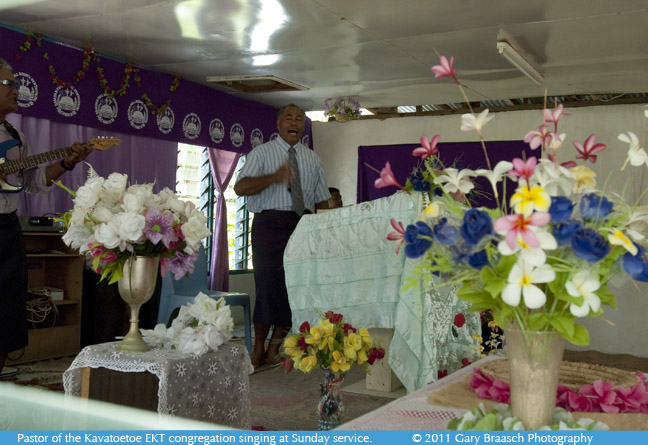
The pastor of the church in Kavatoetoe sings during a Sunday service. This is the smallest of the five congregations of the EKT church, and the building has suffered flooding from strong storm events. In 2007 flooding caused evacuation for a week of many people in the neighborhood, which is at or just below the highest tide levels. During this emergency the church gave money to families, and the nation of Taiwan provided shovels and fruit.
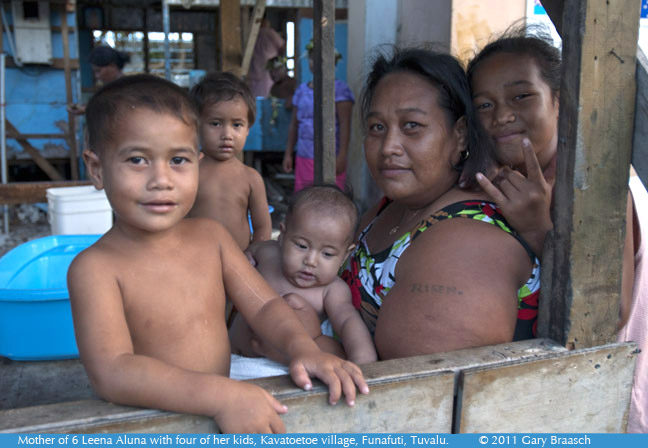
Among those displaced by flooding in 2007 was Leena Aluna. She was married at 16 or 17 and now has six children with her husband Aluna Niiti, a Public Works department employee. She lives with his family in Kavatoetoe village, where son Niiti, 4; daughter Liesa, 2; daughter Salota 5 mo.; and daughter Joanne, 13, gather around.
COPYRIGHT NOTICE:
Photography and text Copyright © 2005 - 2017 (and before) Gary Braasch All rights reserved. Use of photographs in any manner without permission is prohibited by US copyright law. Photography is available for license to publications and other uses. Please contact requestinformation@worldviewofglobalwarming.org. View more of Gary Braasch's photography here.


